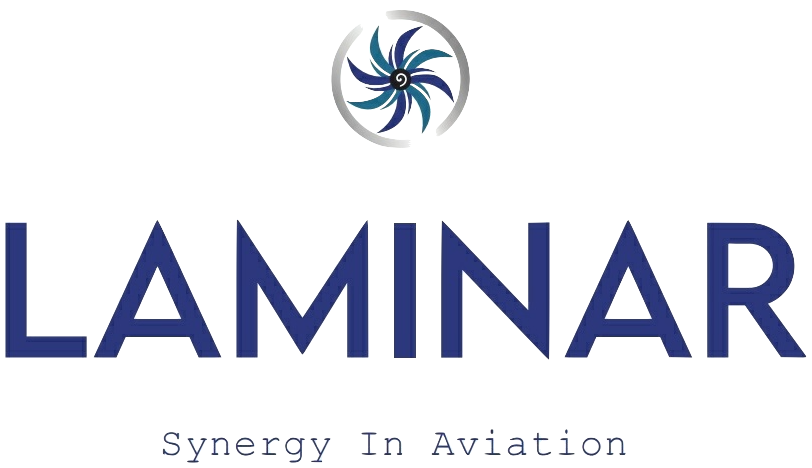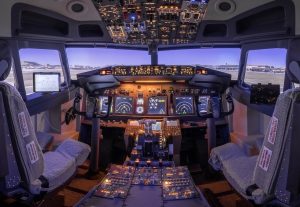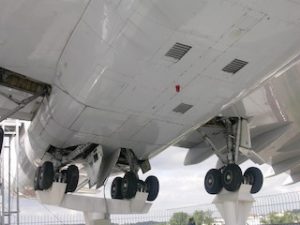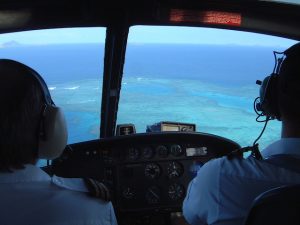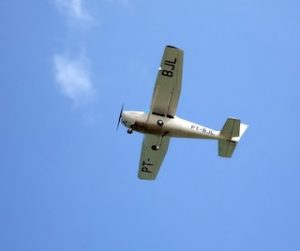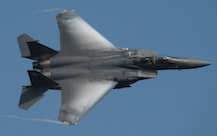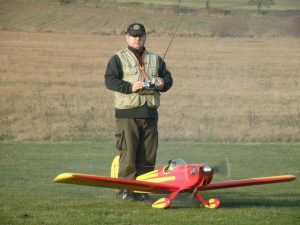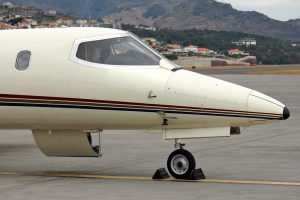How To Find The Best Flight Schools Near Me
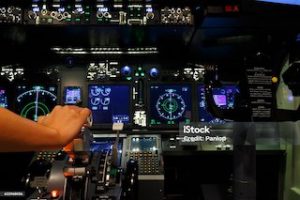 Choosing a flight school is a monumental decision for aspiring pilots. Whether you aim to fly for leisure, work towards a commercial pilot’s license, or embark on a career as an airline captain, the training you receive will lay the foundation for your aviation journey. As you begin your search for “flight schools near me,” it is important to understand the factors that should guide your choice. This guide will help you navigate through the various aspects of flight training, ensuring you make an informed decision that aligns with your aviation goals.
Choosing a flight school is a monumental decision for aspiring pilots. Whether you aim to fly for leisure, work towards a commercial pilot’s license, or embark on a career as an airline captain, the training you receive will lay the foundation for your aviation journey. As you begin your search for “flight schools near me,” it is important to understand the factors that should guide your choice. This guide will help you navigate through the various aspects of flight training, ensuring you make an informed decision that aligns with your aviation goals.
Flight schools near me
Before diving into the logistics of finding a flight school, it is crucial to define your aviation goals. Are you looking to earn a private pilot’s license (PPL) for recreational flying, or are you aiming for a commercial pilot’s license (CPL) to work as a professional pilot? The answer to this question will influence your choice of flight school, as different schools specialize in different types of training.
For those pursuing a career in aviation, consider whether you want to fly for airlines, corporate jets, or in other commercial operations like cargo flights or aerial surveying. So, before you type in “flight schools near me” on the World Wide Web, know your end goal. Each path has its own set of requirements and certifications, so knowing your end goal can help narrow down your options.
Types of flight schools
When searching for “flight schools near me,” you will encounter various types of institutions, each with its own training approach and curriculum. The two primary types are Part 61 and Part 141 schools, named after the sections of the Federal Aviation Regulations (FARs) they operate under.
- Part 61 flight schools: These schools offer a more flexible approach to flight training. The curriculum can be tailored to individual students, allowing for a more personalized learning experience. This flexibility is particularly beneficial for students who may be working full-time jobs or have other commitments. Part 61 schools typically have lower minimum hour requirements, but the training pace can vary depending on the student’s availability and progress.
- Part 141 flight schools: In contrast, Part 141 schools follow a more structured curriculum that has been approved by the Federal Aviation Administration (FAA). These schools are often affiliated with universities or large aviation academies and are ideal for students who prefer a more regimented training environment. The standardised syllabus can lead to a more consistent training experience, and these schools may have lower total flight time requirements due to their structured approach.
Location and accessibility
When searching for “flight schools near me,” location plays a significant role in your decision. Proximity to your home can affect your ability to attend classes regularly, especially if you’re balancing training with other commitments. Additionally, the location of the flight school can impact the type of flying you’ll experience during your training. Schools located near busy airports offer exposure to complex airspace and communication with air traffic control (ATC), which can be invaluable experience for aspiring commercial pilots.
However, schools in more rural areas may offer less congested airspace, allowing for more focused flight training sessions. Consider your comfort level with different flying environments and choose a school that aligns with your preferences and future goals.
Aircraft fleet and maintenance
The quality and variety of the aircraft fleet are critical factors to consider when evaluating flight schools. A diverse fleet can provide you with experience in different types of aircraft, which is beneficial if you plan to pursue advanced ratings like multi-engine or instrument certifications. Check whether the school offers both basic trainers like the Cessna 172 and more complex aircraft like the Piper Arrow or Diamond DA42.
Maintenance is another crucial aspect. Well-maintained aircraft ensure your safety and minimize disruptions to your training schedule due to unscheduled maintenance. Ask the school about their maintenance procedures and whether they have an in-house maintenance team or rely on external services.
Instructors and teaching quality
The quality of instruction is arguably the most important factor in your flight training. Experienced and knowledgeable instructors can make a significant difference in your learning experience. When searching for “flight schools near me,” inquire about the qualifications and experience of the instructors. Ideally, you want instructors who have real-world flying experience, preferably in the type of flying you are interested in pursuing.
Additionally, consider the instructor-to-student ratio. A lower ratio means you will receive more personalised attention, which can accelerate your progress. It is also worth asking about the school’s policy on changing instructors if you find that you are not meshing well with your assigned teacher.
Cost and financing options
Flight training is a significant investment, so understanding the costs involved is essential. When comparing “flight schools near me,” ask for a detailed breakdown of the costs, including tuition, aircraft rental, instructor fees, and any additional expenses like books, exams, and uniforms. Be cautious of schools that quote very low prices, as they may have hidden fees or use older, less reliable aircraft.
Some schools offer financing options or partnerships with financial institutions to help manage the costs. Scholarships and grants may also be available, particularly if you are attending a Part 141 school affiliated with a university. Investigate these options early in your search to ensure you can afford the training program that best suits your needs.
Ground school and classroom instruction
Ground school is a critical component of flight training, covering the theoretical knowledge required to pass written exams and understand the principles of flight. When evaluating “flight schools near me,” inquire about the ground school curriculum and the qualifications of the instructors.
Some schools offer traditional classroom-based ground school, while others provide online courses that you can complete at your own pace. If you prefer face-to-face interaction and the ability to ask questions in real-time, a classroom-based program may be more suitable. However, online courses offer greater flexibility, especially if you are juggling other responsibilities.
Flight simulators and training aids
Modern flight training increasingly relies on simulators and other training aids to supplement in-flight instruction. Simulators allow you to practice maneuvers and procedures in a controlled environment, often at a lower cost than actual flight time. When searching for “flight schools near me,” ask whether the school has flight simulators and how they are integrated into the training curriculum.
High-quality simulators, such as FAA-approved Advanced Aviation Training Devices (AATDs), can replicate the cockpit environment and provide realistic scenarios for instrument training. These tools are invaluable for developing your skills, particularly when preparing for more advanced certifications like the instrument rating.
Training schedules and program duration
The flexibility of the training schedule is another important consideration. Some flight schools offer full-time programs designed to get you through training as quickly as possible, which is ideal if you’re pursuing a career in aviation and want to enter the job market quickly. These programs often involve intensive training with daily flight and ground school sessions.
On the other hand, if you’re training part-time or have other commitments, look for schools that offer flexible scheduling options. Some schools may allow you to fly on weekends or in the evenings, which can help you balance training with work or family obligations.
The duration of the program is also a factor to consider. While accelerated programs can be completed in as little as a few months, part-time programs may take a year or more. Be realistic about your availability and how quickly you want to complete your training when choosing a flight school.
Alumni network and career support
If you’re pursuing a career in aviation, the school’s alumni network and career support services can be valuable resources. Some flight schools have partnerships with airlines or corporate flight departments, offering direct pathways to employment after graduation. When searching for “flight schools near me,” ask about the success rates of their graduates and whether they offer job placement assistance.
Additionally, a strong alumni network can provide mentorship opportunities and connections within the aviation industry. Schools with a good reputation and strong industry ties can give you a significant advantage when it is time to start your career.
Reputation and reviews
In the digital age, it is easier than ever to research the reputation of a flight school. When searching for “flight schools near me,” take the time to read reviews from former students. Look for feedback on the quality of instruction, the condition of the aircraft, and the overall training experience.
It is also worth checking whether the school has any accreditations or has received recognition from aviation organisations. Accreditation can be an indicator of the school’s commitment to maintaining high standards of training.
Visiting the school
After narrowing down your options, it is highly recommended to visit the flight schools in person. A visit allows you to see the facilities, meet the instructors, and get a feel for the overall environment. Pay attention to the condition of the aircraft, the organization of the school, and the professionalism of the staff.
During your visit, ask to sit in on a ground school class or observe a flight lesson. This will give you a better idea of the teaching style and whether it matches your learning preferences. Additionally, use this opportunity to ask any lingering questions you may have about the program, costs, or training schedule.
Preparing for enrolment
Once you have selected a flight school, the next step is preparing for enrolment. This typically involves completing an application, providing proof of identity and citizenship, and undergoing a medical examination. If you’re pursuing a private pilot’s license, you’ll need at least a third-class medical certificate, while commercial pilots require a second-class medical certificate.
It is also a good idea to begin familiarising yourself with the basic principles of flight, airspace regulations, and aviation terminology. Many flight schools offer introductory courses or reading materials that can help you get a head start on your training.
First steps of flight training
Your journey as a student pilot begins with a combination of ground school and initial flight lessons. Early flight lessons focus on basic maneuvers, such as straight-and-level flight, turns, climbs, and descents. You’ll also learn about pre-flight inspections, aircraft systems, and emergency procedures.
As you progress, you will begin to practice more advanced manoeuvres and take on greater responsibilities in the cockpit. Your instructor will gradually introduce you to cross-country flying, night flying, and instrument flying, depending on the type of license you are pursuing.
Path to certification
The path to certification involves passing both written exams and practical tests. For a private pilot’s license, you’ll need to pass the FAA Private Pilot Knowledge Test, which covers topics like aerodynamics, weather, navigation, and FAA regulations. After completing the required flight hours and meeting the proficiency standards, you’ll take the practical test, also known as the checkride, with an FAA-designated pilot examiner.
For those pursuing a commercial pilot’s license, the process is more rigorous, with additional flight hours, advanced manoeuvres, and a more comprehensive written exam. You will also need to pass the FAA Commercial Pilot Knowledge Test and the commercial pilot check-ride.
Continuing your aviation education
Flight training doesn’t end with obtaining your pilot’s license. Continuing education and recurrent training are essential for maintaining your skills and staying current with changing regulations. Many flight schools offer advanced training programs, such as instrument ratings, multi-engine ratings, and flight instructor certifications.
As you advance in your aviation career, you will also need to complete regular recurrent training, which may include flight reviews, instrument proficiency checks, and simulator sessions. Staying engaged in your education ensures that you are always ready to fly safely and competently.
Flight schools near me
Finding the best “flight schools near me” is a crucial step in your journey to becoming a pilot. By considering factors such as your aviation goals, the type of flight school, location, aircraft fleet, instructor quality, cost, and program structure, you can make an informed decision that sets you on the path to success.
Remember that flight training is a significant investment of time and money, so take the time to research and visit schools, ask questions, and ensure that the program aligns with your aspirations. With the right school and dedication, you’ll be well on your way to achieving your dream of flight.
